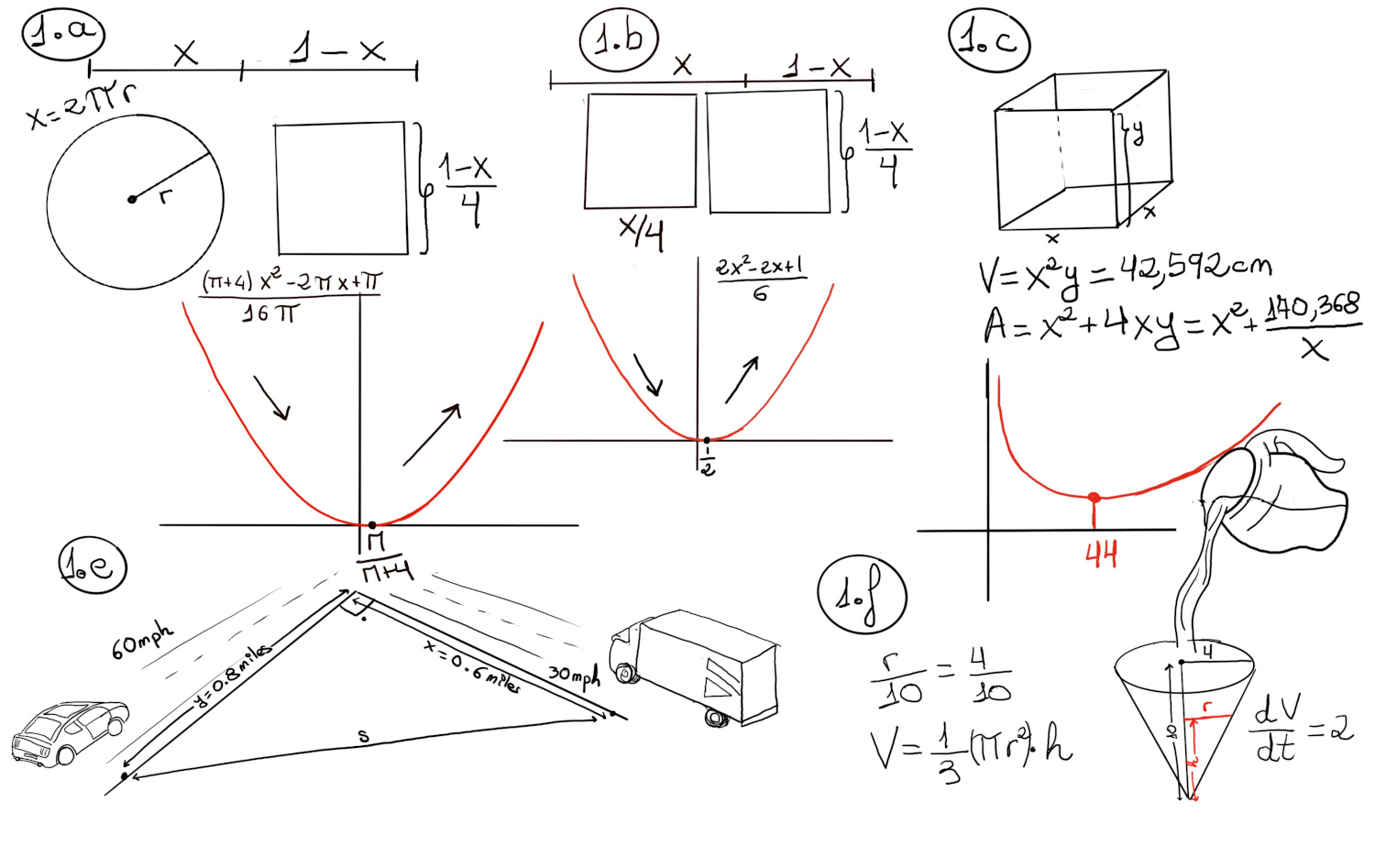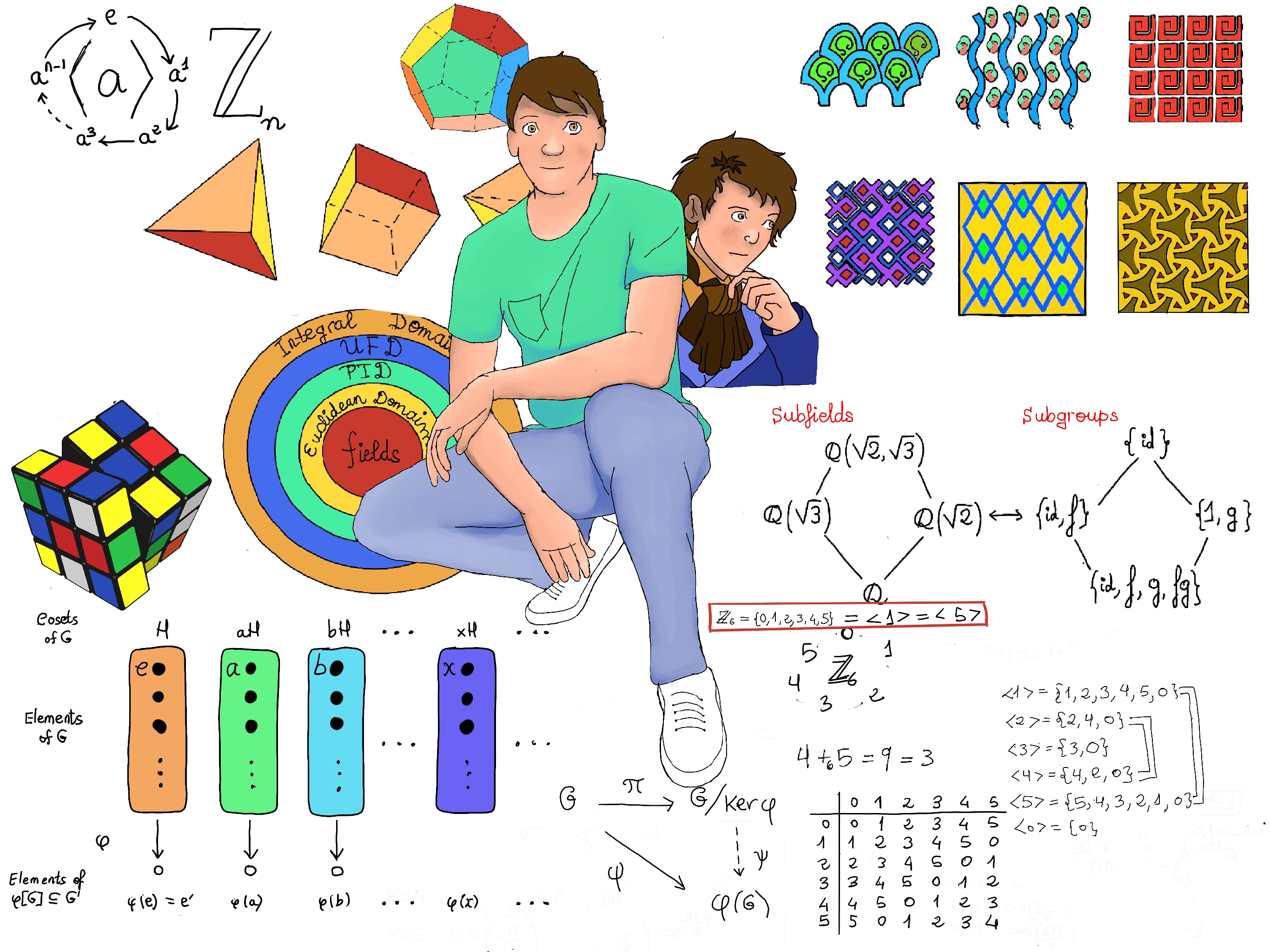
|
 |
 |

|
 |
 |
When I was a little kid, I was really scared of the dark. But then I came to understand, okay, dark just means the absence of photons in the visible wavelength — 400 to 700 nanometers. Then I thought, well, it’s really silly to be afraid of a lack of photons. Then I wasn’t afraid of the dark anymore after that, Elon Musk.
The derivative of a function at a chosen input value, when it exists, is the slope of the tangent line to the graph of the function at that point. It is the instantaneous rate of change, the ratio of the instantaneous change in the dependent variable to that of the independent variable.
Definition. A function f(x) is differentiable at a point “a” of its domain, if its domain contains an open interval containing “a”, and the limit $\lim _{h \to 0}{\frac {f(a+h)-f(a)}{h}}$ exists, f’(a) = L = $\lim _{h \to 0}{\frac {f(a+h)-f(a)}{h}}$. More formally, for every positive real number ε, there exists a positive real number δ, such that for every h satisfying 0 < |h| < δ, then |L-$\frac {f(a+h)-f(a)}{h}$|< ε.

The critical points of a function f are the x-values, within the domain (D) of f for which f’(x) = 0 or where f’ is undefined. Notice that the sign of f’ must stay constant between two consecutive critical points. If the derivative of a function changes sign around a critical point, the function is said to have a local or relative extremum (maximum or minimum) at that point. If f’ changes sign from positive (increasing function) to negative (decreasing function), the function has a local or relative maximum at that critical point. Similarly, if f’ changes sign from negative to positive, the function has a local or relative minimum.
There are two equations involved in this problem, namely x * y = 144 (i), x + y = s (ii) (s is short for sum).
We will solve the first equation for y (i), y = $\frac{144}{x}$. Then, we’ll plug that value into the “y” of the second equation (ii), $x + \frac{144}{x} = s.$
Therefore, we want to find the minimum of the function $s = f(x) = x + \frac{144}{x}.$ Let’s take derivatives of s with respect to x, $\frac{ds}{dx} = 1-\frac{144}{x^2}$ and its critical points are $1-\frac{144}{x^2} = 0 ↭ \frac{144}{x^2} =1 ↭ x^2 = 144 ↭ x = ± 12$. By assumption, x needs to be a positive number.
The length of the given wire is 1 meter. Let x be the wire’s part that is bent into a circle, and therefore (The length of a circle’s circumference is 2πr, where r is the length of the circle’s radius) x = 2πr (i) and 1-x is the rest of the wire.
Since the perimeter of a square is four times the length of a side, then 4s = 1-x (ii) where s is the square’s side, hence s = $\frac{1-x}{4}$.
We will solve the first equation for r as we previously did, x = 2πr ⇒ r = $\frac{x}{2π}$. The diagram is shown in Figure 1.a.

Our goal is to minimize the area (the area of a circle is π times the radius squared, the area of a square is the side squared):
$A = π\frac{x^{2}}{4π^{2}}+\frac{(1-x)^{2}}{4^{2}} = \frac{4x^{2}}{4^{2}π}+\frac{π(1-x)^{2}}{4^{2}π} = \frac{4x^{2}+π(1-x)^{2}}{4^{2}π}$
$A = \frac{4x^{2}+π(1-x)^{2}}{4^{2}π} = \frac{4x^{2}+ π -2πx +πx^{2}}{4^{2}π} = \frac{(π+4)x^{2} -2πx + π}{4^{2}π}$
Let’s take derivate of A with respect to x, $\frac{dA}{dx}=\frac{1}{4^{2}π}(2(π+4)x -2π)=\frac{1}{8π}((π+4)x -π). \frac{dA}{dx}= 0 ⇒ x = \frac{π}{π+4}$ is the critical point.
$\frac{s}{r} = \frac{\frac{1-x}{4}}{\frac{x}{2π}} = \frac{(1-x)2π}{4x} = \frac{(1-x)π}{2x}= \frac{(1-\frac{π}{π+4})π}{2\frac{π}{π+4}} = \frac{(\frac{π+4-π}{π+4})π}{2\frac{π}{π+4}}=\frac{1}{2}$
In other words, if the radius of the circle is half the side of the square, the sum of both areas is the least.

First, we draw a diagram to understand the problem (Figure iv).

Let l and b be the the length and width of the rectangle respectively, we have two equations, namely 2·(l + b) = 20 (i, the perimeter of a rectangle is the total length of all the sides of the rectangle. Since the opposite sides of a rectangle are equal, the perimeter equals 2·(l+b), that is, two equals lengths and two equals widths) and A = l·b (ii, Area of a rectangle = width * length).
We want to maximize A. First, we solve for b in the first equation (i), 2·(l + b) = 20 ↭ l + b = 10 ↭ b = 10 -l, then plug the result in the second equation (ii), A = l·b = l·(10 -l).
$\frac{dA}{dl} = 10 -l -l = 10 -2l$. Its critical points are 10 -2l = 0 ⇒ 2l = 10 ⇒ l = 5.
The length of the given wire is 1 meter. Let x be the wire’s part that is bent into the first rectangle and therefore their sides are: $\frac{x}{4}, \frac{1-x}{4}$. The diagram is shown in Figure 1.b.

A = $(\frac{x}{4})^{2}+(\frac{1-x}{4})^{2} = \frac{x^2+1-2x+x^2}{16} = \frac{2x^{2}-2x+1}{16}$
$\frac{dA}{dx} = \frac{4x-2}{16}. \frac{dA}{dx} = 0$ ⇒ x = 1⁄2 is the critical point.
Firstly, we will make a diagram to visualize the problem (Figure iii).

Secondly, let’s see the equations involved and the problem’s constraint. The constraint of the problem is previously stated, namely 950 meters of fencing, that is, 5x + 2y = 950 (i). What do we want to maximize? The area of the four pens, A = x·y.
Thirdly, we solve for y in the first equation (2y = 950 -5x ⇒ y = 475 -$\frac{5}{2}·x$) and substitute the result into the formula we want to maximize, A = x·y = 475x-$\frac{5}{2}·x^2.$
Next, we calculate the critical number(s) and determine intervals of increase/decrease, $\frac{dA}{dx} = 475 -5x = 0 ⇒ 5x = 475 ⇒ x = \frac{475}{5} = 95.$